When people ask of my age, I’d say I am in my 30s. Soon enough, I will just tell them I’ve forgotten. After a certain point, you just don’t count. Luckily with my Asian genes, I often get away with passing myself off as younger than I am. But my health cannot be lied to. As you age, you can just feel that your body is aging with you. For someone like me, who drinks, stays up late, smokes occasionally and keeps a grossly underused gym membership, I know that my lifestyle will get the better of me some day. Maybe a check-up is in order.
Previously, my mind was fixed on going to Thailand. It’s a health check at a JCI-accredited hospital with great food, great shopping and a drink at Vertigo to follow, what could be better?
But an opportunity came up from Taiwan, which prompted me to do some research of my own. The 23 million-strong population in Taiwan is almost all covered the National Health Insurance (NHI) system that was put in place in 1995. Almost all hospitals on the island, private or public, have a contract with the scheme and are reimbursed on a fee-for-service basis. Profit margin in medical services is capped at 17 percent by law, which means that even for visitors, they only need to pay up to what the government allows.
According to Amy Cheng, executive director, Service Industry Promotion Center of Taiwan External Trade Development Council (Taitra), besides having to keep their profit margin low the 800 hospitals, are also required by the government to upgrade their equipment consistently to reach requirements. The standards are so high, she says, that 14 of the 200 top major hospitals worldwide are based in Taiwan. As of June this year, 10 hospitals on the island have been accredited by JCI.
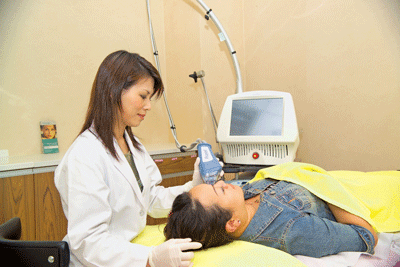
That means that Taiwan hospitals are faced with the challenge of having to keep prices low and the service benchmark high. They need more traffic to increase revenues and healthcare tourists from overseas are vital. “The scale of medical tourism in Taiwan is not as big as places like Thailand and Singapore. We are still at an initial stage,” she says.
The Taiwanese health authorities have recently revealed a plan to establish a special medical zone for foreigners, near Taoyuan International Airport. Local and international investors are being called on to invest at least NT$4 billion (US$130 million) in the project.
In October, I set off for Taipei and checked into the Taoyuan branch of Chang Gung Memorial Hospital (www.cgmh.org.tw), one of Taiwan’s biggest, for a one-day examination.
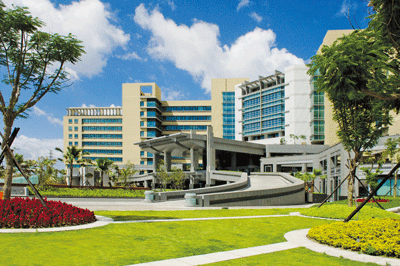
WHERE IS IT? Chung Gung Memorial Hospital has facilities in various cities and townships, with most of them in the north. The most famous one is Linkou, in the eponymous city of the Taipei County, designated for more serious surgeries. In fact, Taiwanese pop star Selina Jen, who has recently suffered three-degree burns in up to 40 percent of her body from an accident at the shooting a television drama, is being treated here. But visitors for outpatient services are assigned to the newer but smaller Taoyuan branch, which was where I went. It is reachable from Taoyuan International Airport by a 30-minute drive, and to take a taxi, it would cost about NT$600 (US$19.75).
THE FACILITY Opened at the end of 2003, Taoyuan Chang Gung Memorial Hospital hosts most of the patients coming for routine check-ups and it houses the cosmetic department, sleep centre, dental services and traditional Chinese medicine floor.
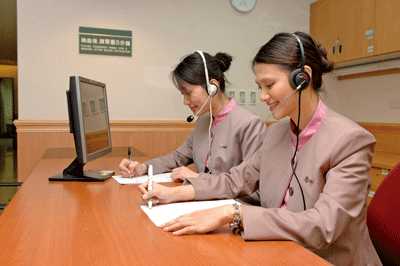
THE PRELIMINARIES Before my trip, Susie Lin from the hospital’s International Service Centre got in touch to have me fill in a medical history form. She also sent me instructions on what to, and what not to, do the night before my check-up. She also sent me a document with directions to the hospital. As I wanted private transport arranged, she offered to help me follow up on it. Her proficient English assured me that if my rudimentary Mandarin failed me, I would still be able to get by.
Not liking the idea of having to rush to the hospital bright and early in the morning, I requested to spend the night there in one of the rooms. The comfort level was comparable to a three-to-four star hotel, and the toilet seat was even heated!
Since I arrived the day before, I was offered a tour of various facilities including the Senior Village, laser surgery rooms and sleep centre, which apparently runs a month-long wait list.
I had no need for this department’s expertise, as I was really tired after dinner, which consisted of a meat and vegetable broth, stir-fried egg with tomato, steamed chicken with ginger and scallion, green vegetarian and some delicious string beans. The meal was very palatable but light, without excessive use of oil. I finished eating at around 8pm and was instructed to not have any food and water after 10pm. That was not a problem as by then I was totally ready to change into the baby blue cotton sweat suit given to me (not really my colour but I reckoned I wasn’t there to look good) and go to bed. I did, though, make use of one of the three computers at the floor’s main lobby to catch up on emails as there was no wifi.
THE PROCEDURE The next morning I was fully rested and ready for the day’s programme. I was to put into two tubes my urine and waste samples, and it even had a diagrammed instruction in the package to detail how to properly handle it.
Nurse Wang Hui Yu turned up to collect them and accompanied me to a counter in lobby area where she’d take some of my blood for testing. The communication was done in English and she acted as a translator whenever needed. Most of the doctors, many US-educated, spoke very good English but others preferred to use Mandarin.
Almost every procedure was done on the same floor and the whole experience felt like a breeze. There was a bit of a sci-fi moment when I was lying under the bone densitometer machine, which scanned me up and down with pencil-beam technology. The procedure took less than 10 minutes.
Then, I was led to another room for electrocardiography, and the nurse skillfully connected me to half a dozen of electrodes. Dr Ling Uy Sheng directed my attention to images that displayed the movement of my heart. Apparently one of the valves was not shutting properly and there was a mild case of tricuspid insufficiency (blood leaking within the heart). But he added that the heart was otherwise all functioning well so there was no immediate cause for concern. I also had my lungs X-rayed but that part was rather uneventful. My lung capacity was also checked, by having me blow as hard as possible into a tube. Apparently, I was doing quite well, even though I do smoke from time to time.
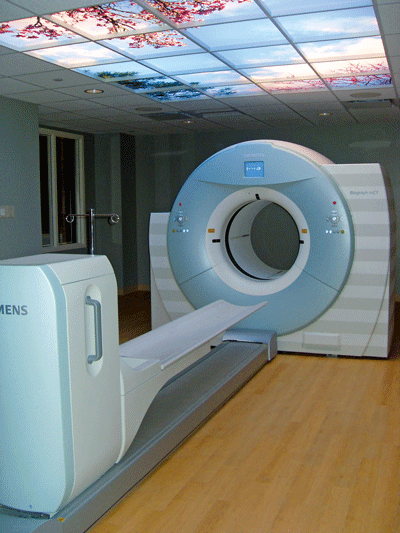
The experience that I found a little off-putting was the abdominal sonography session. First I had to put up with all the sticky jelly smeared on my abs, then I was shown all my internal organs – I really had no interest in seeing that much of myself. Carotid ultrasonography was also performed, in another room, but at least with this one I felt less exposed.
After my vision test, which confirmed that without my glasses or contact lenses I am practically blind, I finally got on to a more uplifting part of the day: spa. I was led to the traditional Chinese medicine section on the eighth floor, where Dr Chiao Sheng Lin felt my pulse and looked at my tongue. She explained to me that my qi (literally means “air”) was weak, a condition that would see me feeling tired all the time. I had always thought it was the 14-hour workdays. She suggested that I consume more ginseng, which sounded like an expensive suggestion.
But to immediately soothe my overtired body, she prescribed an herbal bath. The staff quickly drew it up – in such a perfect temperature that as soon as I submerged into it, I felt like all my stress and worries were washed away. The half-hour soak was really magical. After it, I was refreshed and felt pounds lighter.
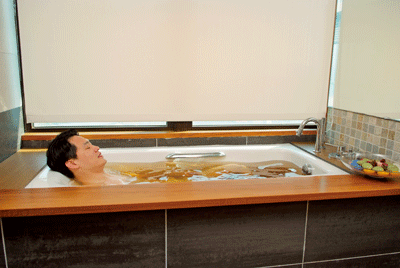
According to Dr Sien Hung Yang, associate professor and director of the hospital’s department of traditional Chinese medicine, the hospital is making an effort to combine the use of Western and Chinese medical principles and his doctors each has two licenses and are knowledgeable in both Western and Chinese medicine.
By 12.30pm, I could finally eat again, and it was also a soup, four dishes and rice. The highlight of the meal was this great steamed slice of cod, to be eaten with a squeeze of lemon juice. I was also delighted by the exotic and delightfully sweet green orange that came with the set. I finished my meal at around 1.15pm and Nurse Wang noted that another sample of my blood was to be drawn two hours later, to see if my blood sugar level was normal (or if there were signs of diabetes).
In the afternoon, I had a consultation with a nutritionist and Dr Chen Yu Ming, who looked at my preliminary report. He explained I didn’t show any cancer markers (phew!) and was generally in good health, although there were a few things that I may want to check again in a year or so, such as polyps in my gallbladder. He also checked my prostate and concluded that it was in good shape.
The final test of the day was a urea breath test, for monitoring of H. pylori, believed to cause 80 to 90 percent of peptic ulcer disease cases. I was then free to return to my room for a shower and pack up for my 4pm ride to Taipei, also a half-hour ride away, for other business.
THE ANALYSIS I received my full report a little more than a week later and found out that I had tested positive for H. pylori. The recommendation was that I should follow that up in a month or so. Otherwise the polyps in my gallbladder should be checked again in a year and my heart three to five years. Given that I don’t exactly live the healthiest of lifestyle, the result was like a surprise present.
OVERALL IMPRESSION My experience was very positive. Every member of the staff was very competent and helpful. It has truly shown me the high quality of Taiwan’s medical service. The only issue that I can see is that some of the information in the report is in Chinese only and the information system in the hospital was not totally bilingual either. If the island wants to attract a global clientele, it may need to be more English-ready. In the meantime, the friendly people at the ISC would have to deal with the language barrier on a case-by-case basis.
PRICES The check-up I had costs NT$26,510 (US$869), including room and board. A one-day package starts from NT$15,000 (US$494).
CONTACT International Service Center, Chang Gung Memorial Hospital, No.123, Dinhu Road, Jiolulu Village, Gueishan Township, Taoyuan County, Taiwan, tel +886 3 3196200 ext. 2555, www.cgmh.org.tw/isc








